When people think of row houses in American cities, the first places that come to mind are usually Baltimore, Philadelphia, and a handful of other East Coast cities. St. Louis has a fairly large collection of row houses as well, especially for a Midwestern city. While the city is often recognized for its turn of the century mansions and its gingerbread houses from the 1930s, the row houses built during the 19th century are rarely mentioned. Despite this, St. Louis features one of the largest collections of row houses in the entire Midwest.
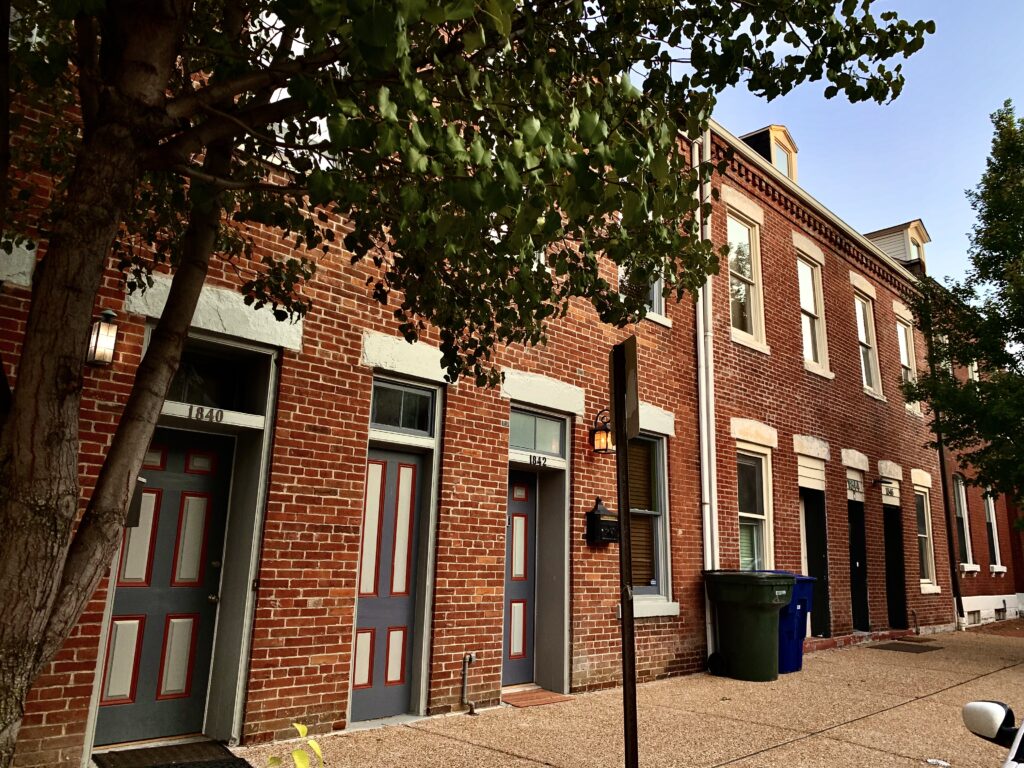
Row houses in St. Louis were first built in the early 19th century as early American settlers began to move to St. Louis and outnumber the original French settlers, who typically built log structures in the French colonial style. The row houses and Federal style brick buildings were brought over with the American settlers arriving from the East. By the 1830s and 1840s, St. Louis had numerous brick row houses along the riverfront and throughout downtown.
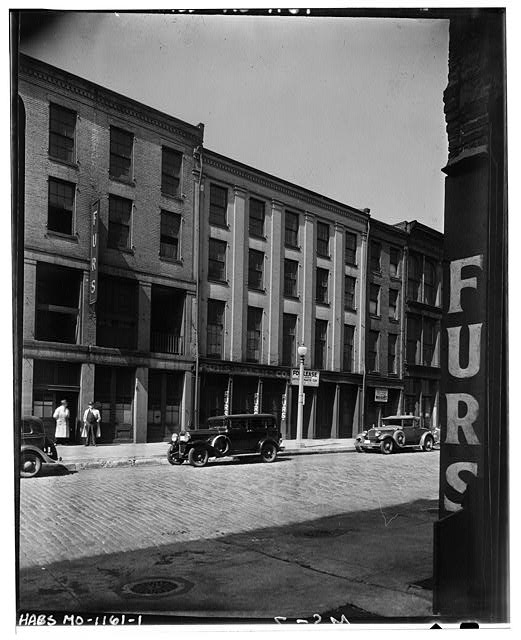
As St. Louis expanded beyond downtown, and into the surrounding areas, row houses provided the expanding city with lots of high density housing, which helped the city to grow from 16,000 in 1840 to 160,000 in 1860. Among these neighborhoods were Soulard and Old North St. Louis, which both have numerous examples of surviving row houses that were built before the Civil War. A walk through Soulard to the north of Russell Boulevard is one of the best preserved of the early urban neighborhoods in St. Louis, with many examples of what was built as the city first expanded beyond downtown. Today, some of the oldest row houses in the city still stand in Soulard. One of the oldest is on South 8th Street, and it was originally built at some point around 1845. One of its earliest residents was a German immigrant named Julian Epping, who arrived in St. Louis from Germany in about 1845. Another early row of houses is located on South 11th Street between Allen and Geyer, and it was built in about 1858. Old North St. Louis is also home to many row houses, with many examples going back to the 1850s and early 1860s. Many of the early row houses in St. Louis were built in the Greek Revival style, which was popular from about 1820-1865 across the country. Many of the other neighborhoods that were filled with row houses, such as those south of downtown, have long been cleared of most of their row houses, with only a handful of the original buildings remaining. By the 1870s, most of these early neighborhoods had been almost fully developed.

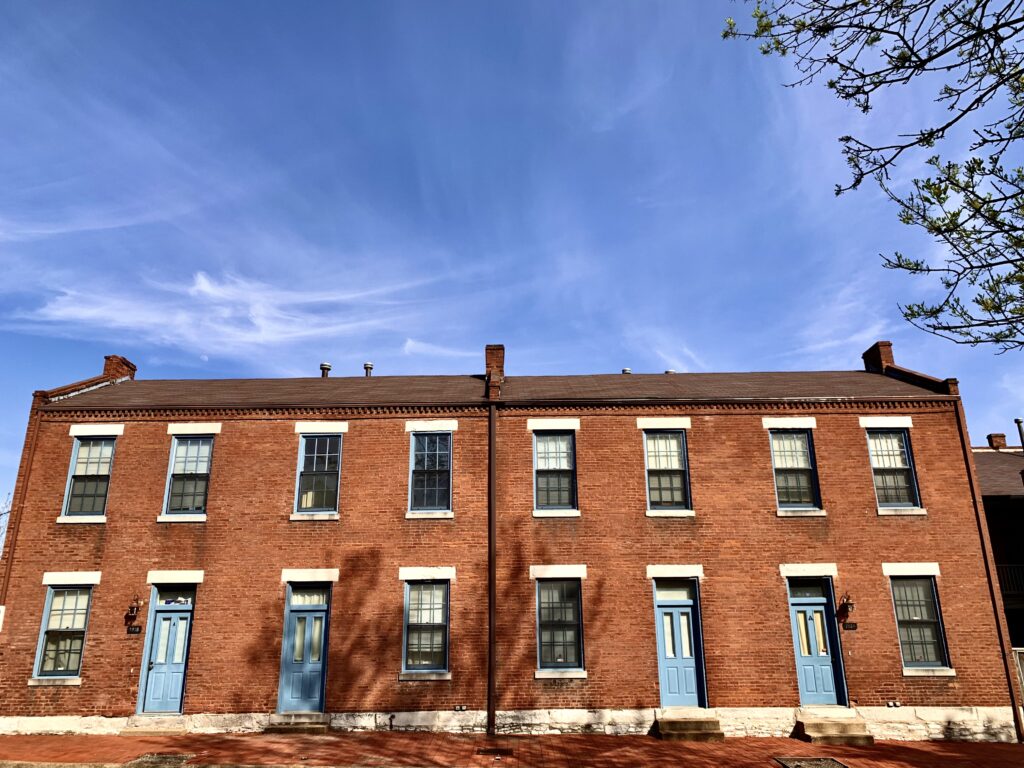
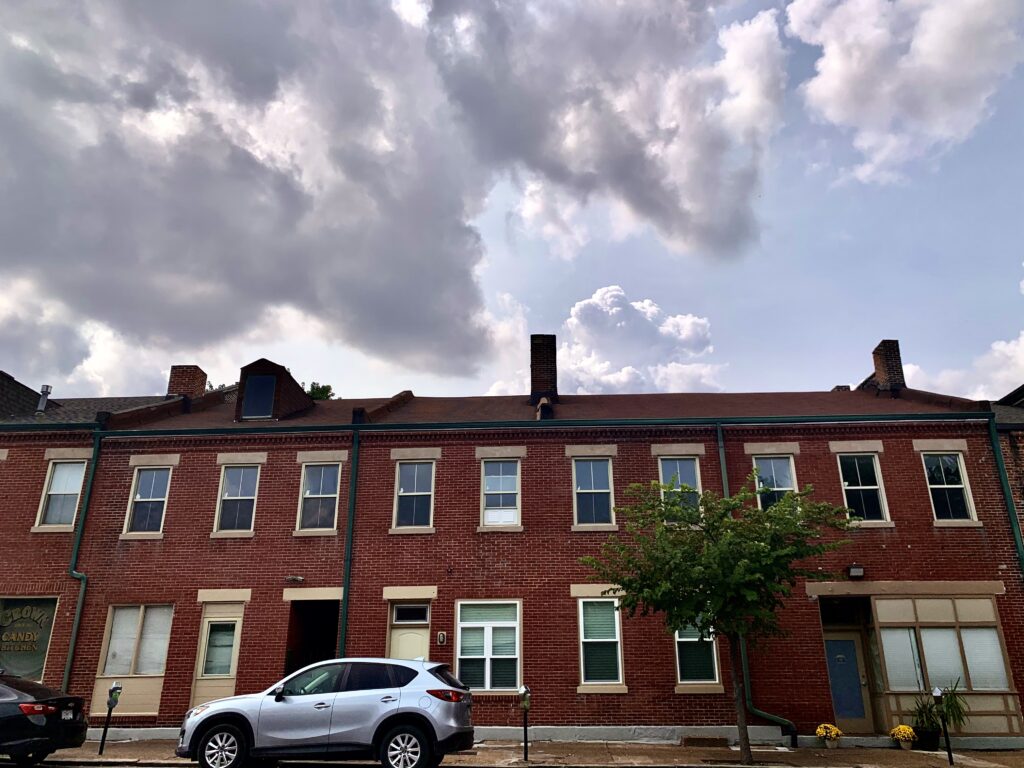
In the late 1850s and 1860s, row houses expanded beyond the early neighborhoods, and also were filling in the undeveloped land that still existed in the earlier neighborhoods. It was also around this time that the St. Louis Mutual House Building Company was founded, as the first large scale house builders west of the Mississippi. One of the finest examples of their early work can be found along South 10th Street in LaSalle Park, and it features cast iron detailing throughout the row. The building was home to many middle class German shopkeepers, and had been built by Otto P. Koenig between 1860 and 1864. Soulard also began to develop in the Thomas Allen addition, and with the development of this addition came more row houses, especially along Russell Boulevard. Areas around Soulard Market, which had already started development as early as the 1840s, began to fill in completely by the 1860s. By 1875, Soulard was filled with row houses, along with neighborhoods nearer to downtown.

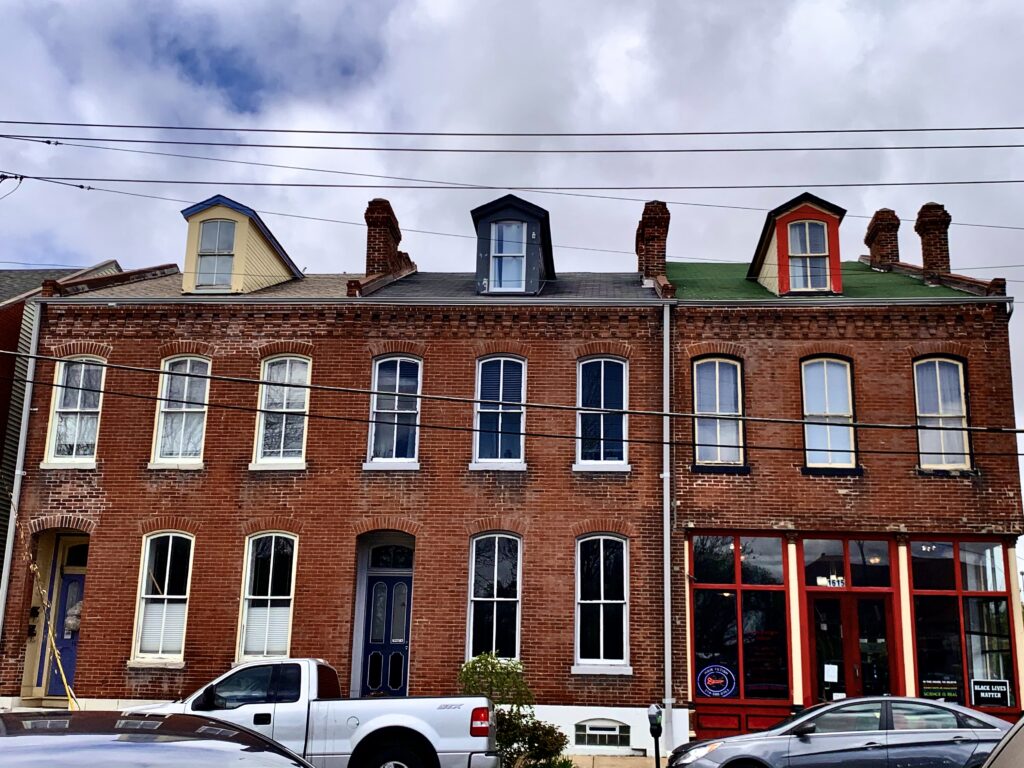
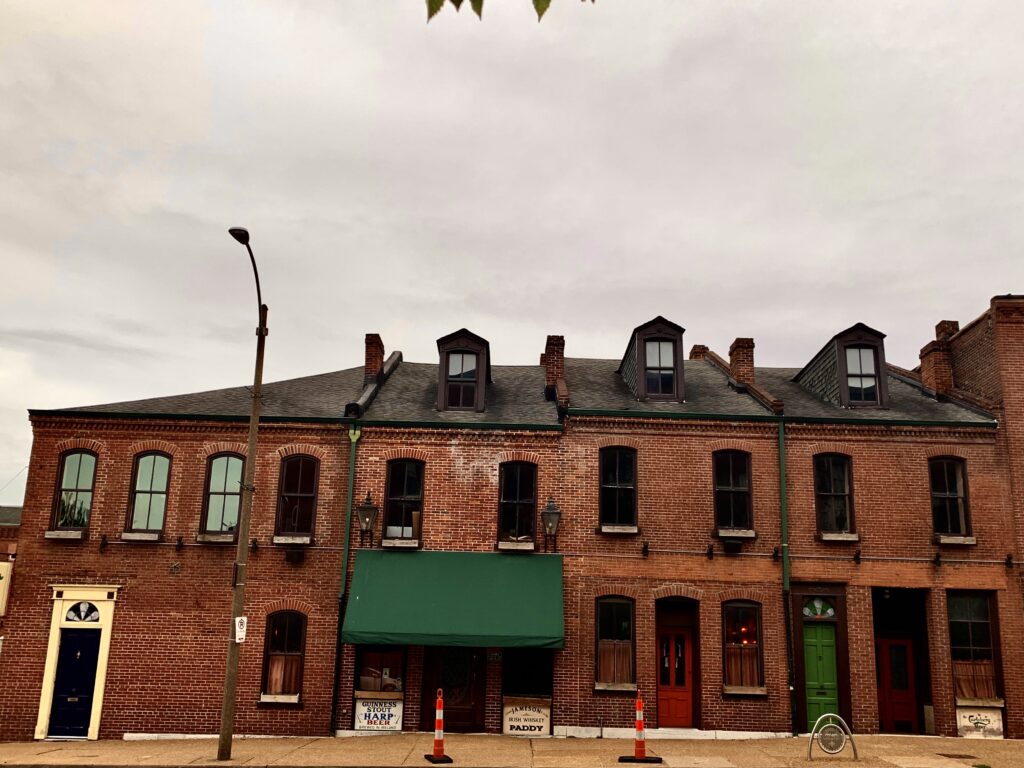
The neighborhoods west of downtown also began to experience a boom in row house construction as the city began to expand westward into downtown west and midtown around the time of the Civil War. As the population of the city kept expanding, this became one of the most densely populated parts of the city. Further north, the Hyde Park neighborhood, which had been annexed by St. Louis in 1855 after previously being known as the town of Bremen, began to grow as a German immigrant neighborhood during the 1850s and 1860s, and along with its growth came many row houses that were constructed in the mid-19th century vernacular style. The arched brick windows and pitched roofs of these buildings are an indication of buildings that were constructed around this time. Many of the surviving examples can be found along Salisbury Street, with most examples located near Hyde Park itself. Construction of the houses did not stop during the Civil War, and many from this time can still be seen in the city today. One particular example is a row house located near the Lemp Brewery, which was constructed in about 1864, around the same time that the brewery moved from its downtown location. In spite of the war that was dividing the country, St. Louis continued to build row houses.
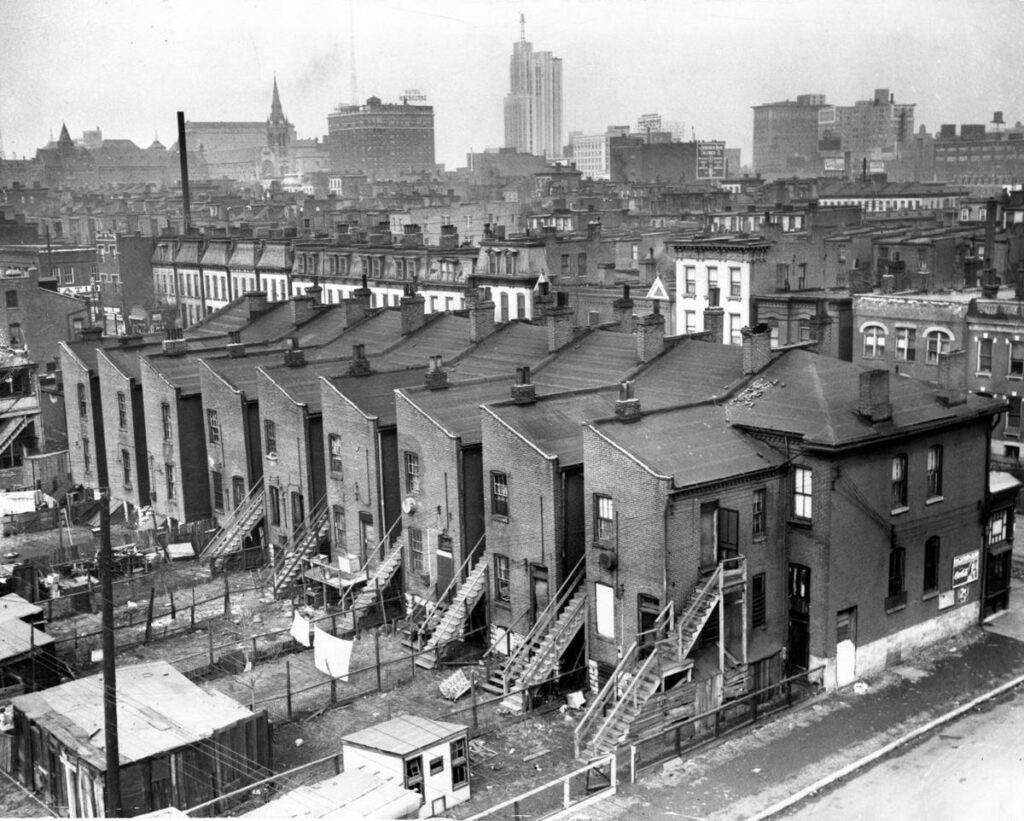
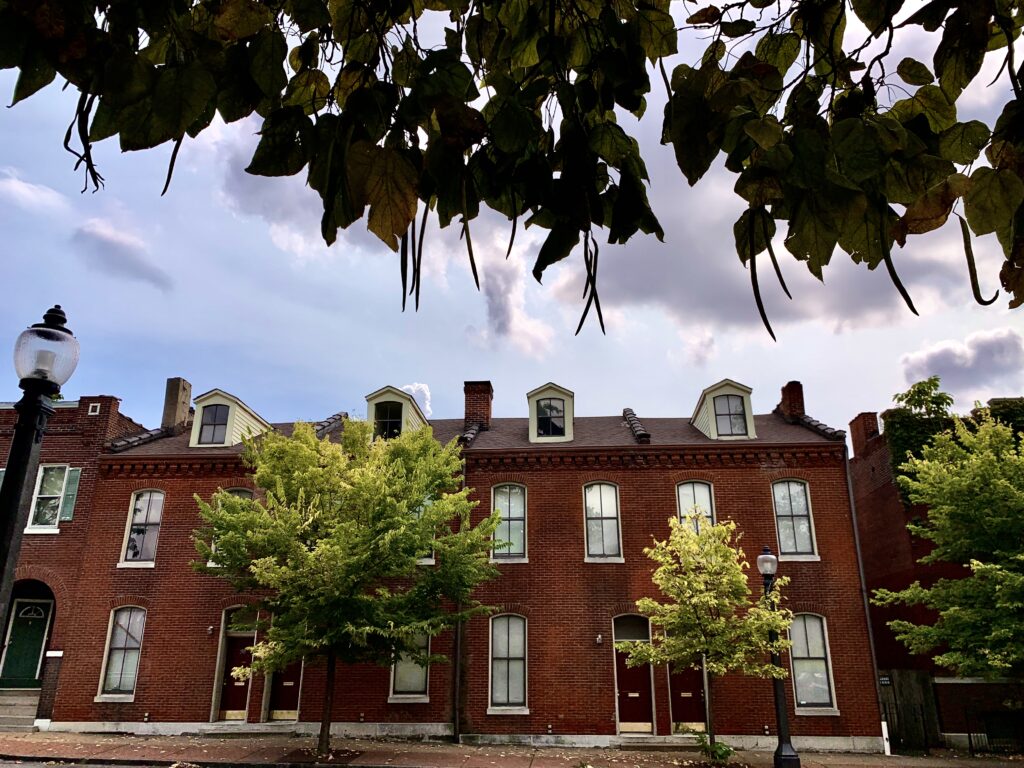
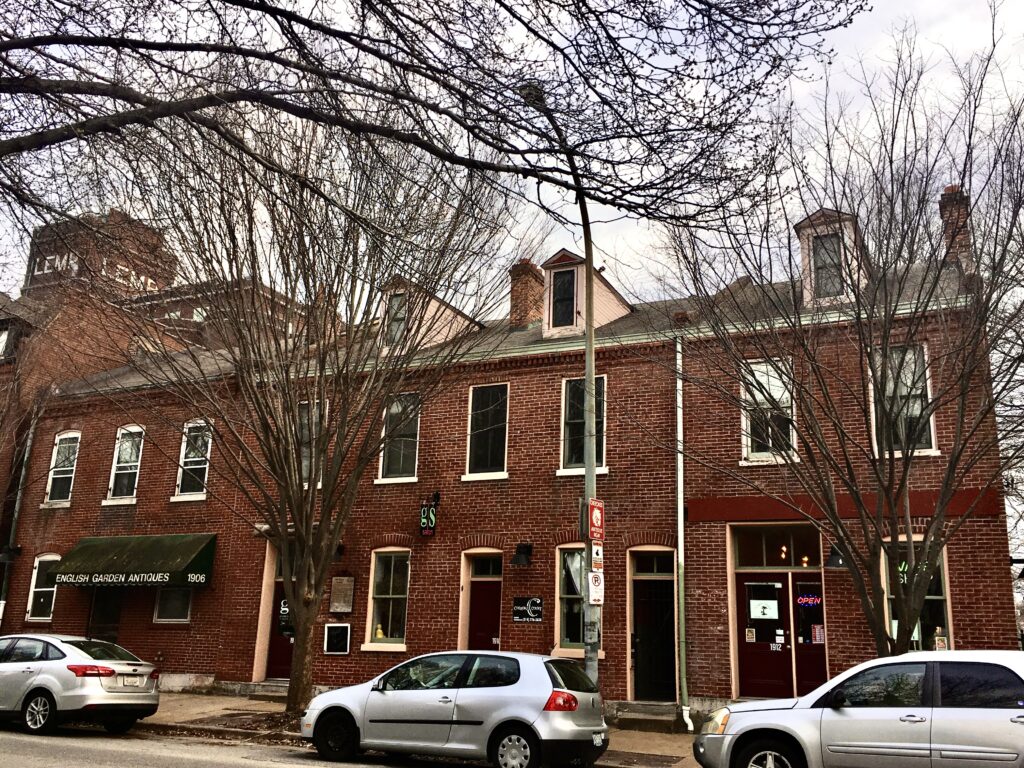
St. Louis continued to expand and build row houses and expand following the Civil War. During this time, many of the row houses were constructed in the Italianate style. These buildings were constructed with segmented arched windows, and had wooden cornices decorating the roof line. The eastern half of Lafayette Square became a part of the city where the Italianate style row houses took off. An ordinance passed in 1863 outlawed certain businesses from operating within 800 feet of Lafayette Park, and the area quickly became a wealthy residential neighborhood in the late 1860s and 1870s. One of the best known row houses is Harris Row, the longest set of row houses still standing in the city. They were built in 1870 for William S. Pope, a lawyer, and one of the early residents was William Torrey Harris, a major influential figure in the St. Louis Public School system. The row, along with many others in the neighborhood, was faced with limestone, a symbol of wealth and status in 19th century St. Louis. Many other examples were built fully out of brick, but even these were for middle class residents. At the time row houses were a popular choice of urban living both among wealthy and poor people living in the city. The examples in Lafayette Square are among the higher end row houses in the city.
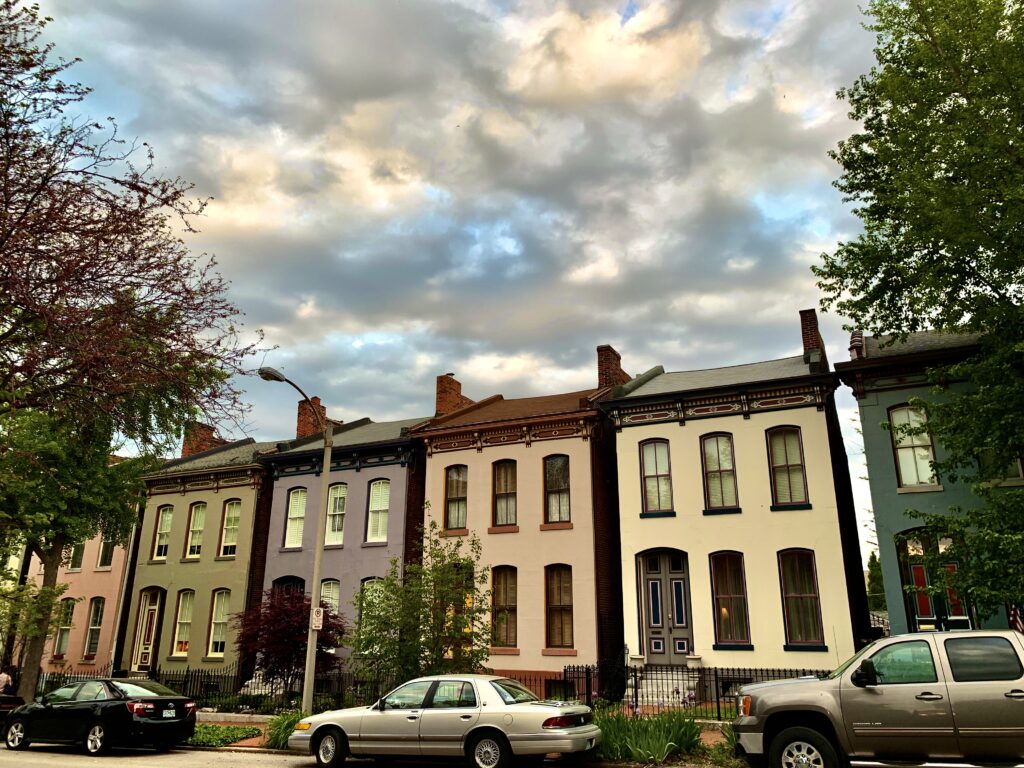
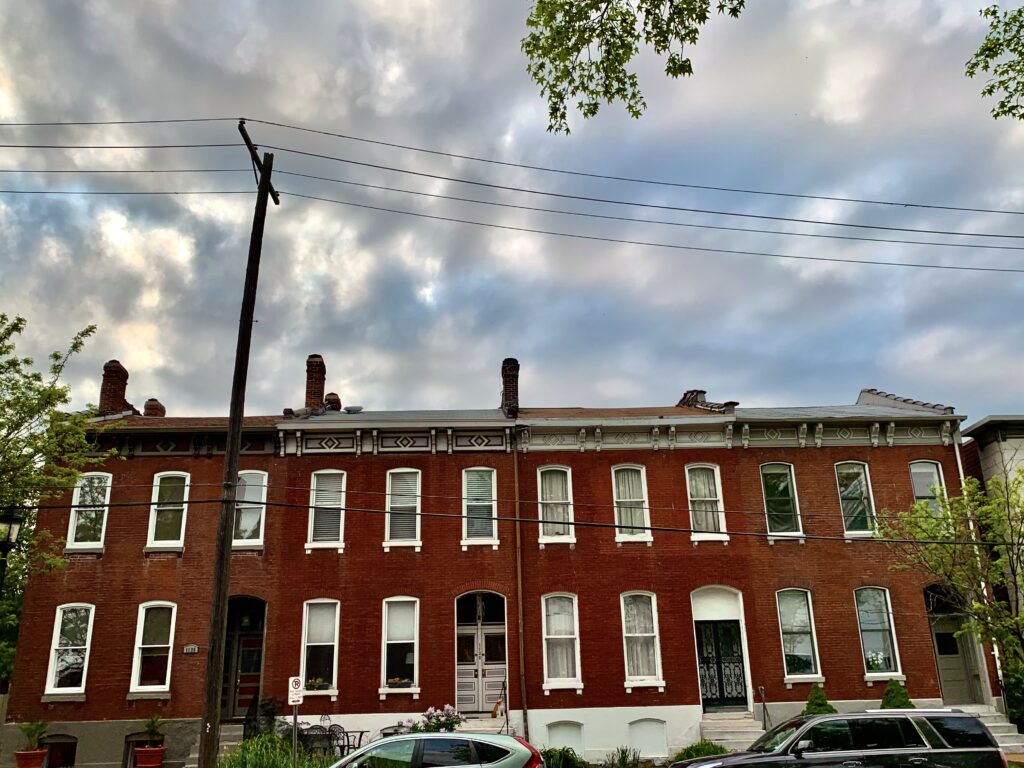
Also during the 1870s, many neighborhoods both in North and South St. Louis were being built in more outlying areas. Examples of row houses were constructed all throughout the Mill Creek neighborhood during this time, creating a densely populated area that now expanded west to Grand Avenue, and later became the center of the African American community in St. Louis in the early 20th century. In North St. Louis, the areas west of Old North St. Louis began to develop with a combination of working class row houses and townhouses for wealthier residents. Particularly unique examples from this time period are Italianate style homes with limestone segmented arches. This architectural style is found almost exclusively in North St. Louis. At the same time, rows of houses were also being built in South St. Louis neighborhoods, such as Benton Park. One of the longer sets of row houses in the city was built on Sidney Street around this time by the St. Louis Mutual House Building Company. In 1873, they started with three houses, which can be seen on the 1875 Compton and Dry map, and in 1876, they built seven more houses, creating a row of 10. Within a year’s time, another row was built just a block down the street. Further west, another row was constructed at Arsenal and Gravois, at the site of today’s IMO’s pizza location. These were some of the first urban expansions into what had been an outlying German immigrant neighborhood, and by 1890, the area had transformed into a densely-populated urban neighborhood.

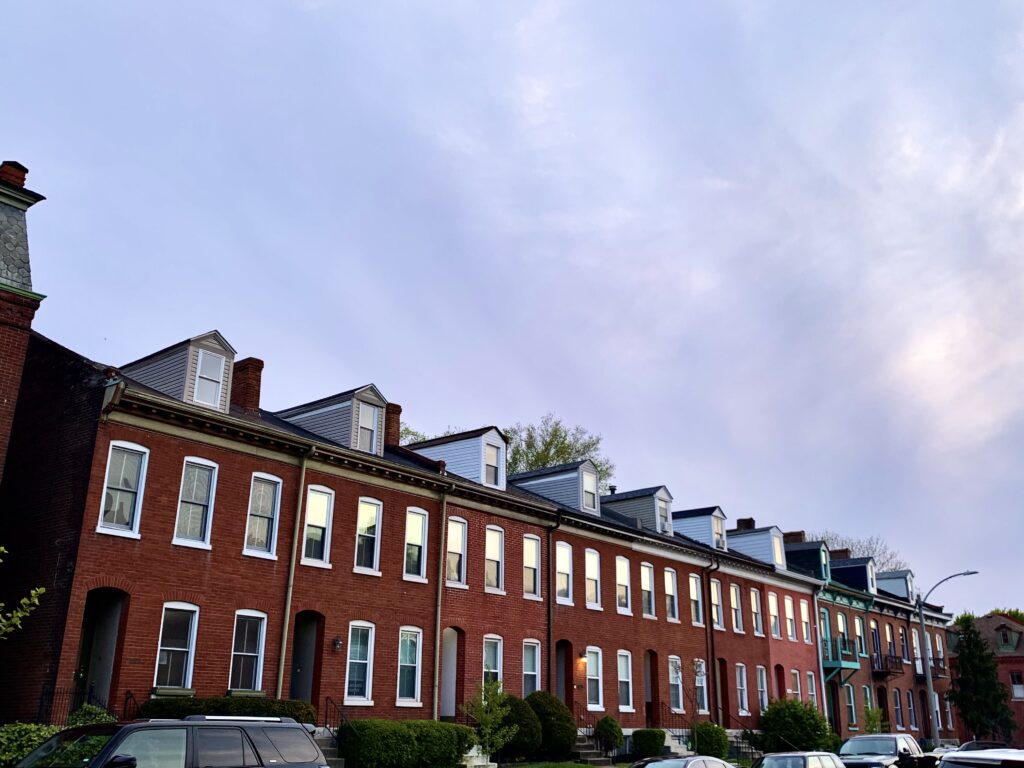
One of the most recognized architectural styles in older St. Louis neighborhoods is the Second Empire style. This style is characterized by the third floor Mansard roof, which had been introduced to wealthy St. Louis neighborhoods in 1866. Within a few years, the style was being used by wealthy businessmen in row house construction. One example was Francis Watkins, who built two rows of Second Empire houses in 1873, both in the Hyde Park neighborhood. One was on North Park Place, and the other was on Bremen Ave, and both were a part of Watkins’ hotel, which he ran in the neighborhood during the 1870s and 1880s. The North Park Place row suffered a fire sometime in the late 1870s, and only three of the original row houses remain today. The Bremen Row also suffered losses in recent years, but three of them still remain as well. Another wealthy businessman who built a row of Second Empire houses during the 1870s was William Barr, founder of Barr Dry Goods Company, which later became a part of Famous Barr. The row was built in 1875, and it still faces Lafayette Ave, just a block west of Jefferson. Further south, the DeMenil family decided to build row houses in the Second Empire style at the edge of their property at the corner of 7th and Cherokee Street. When the DeMenil mansion was spared from the construction of highway 55, the row was demolished.
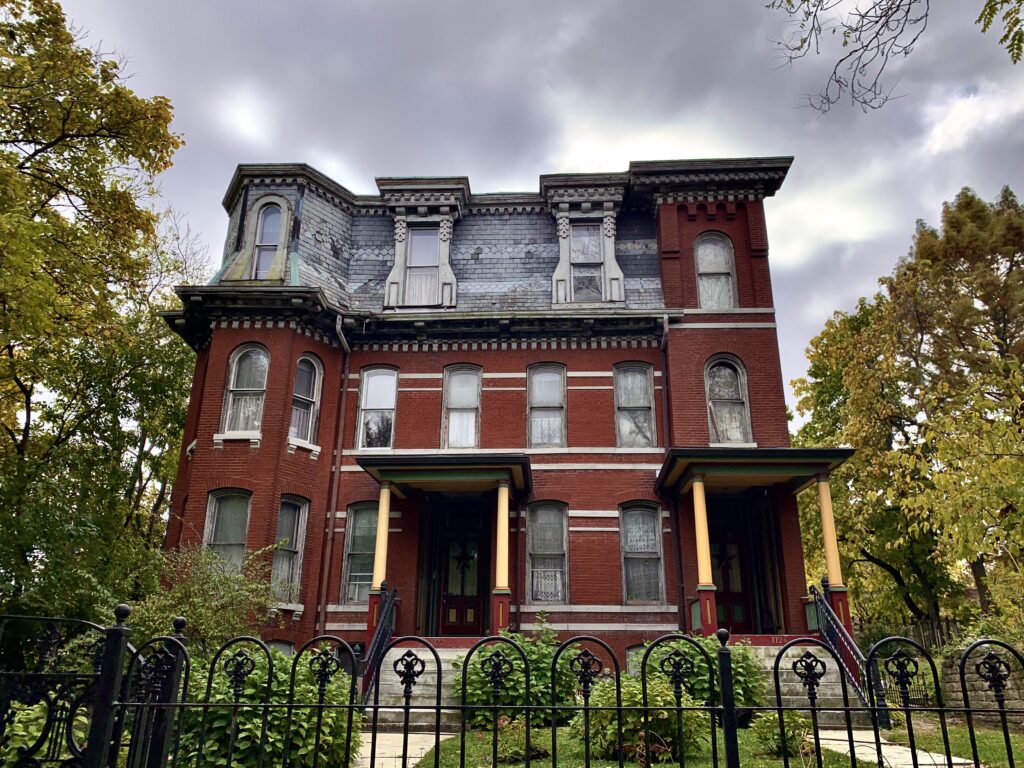

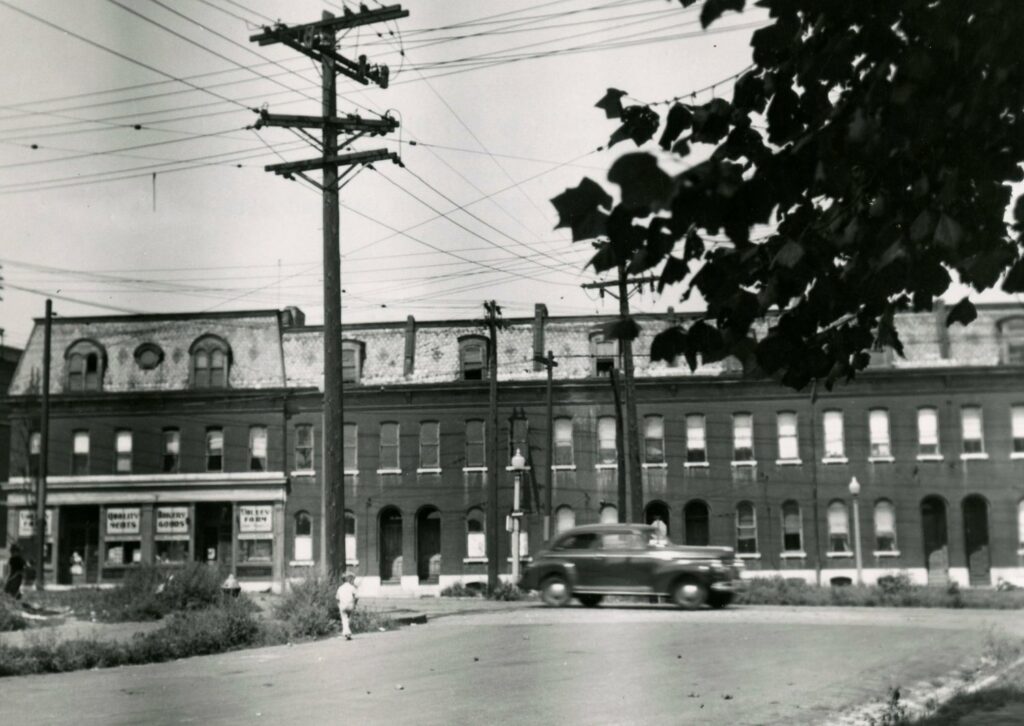
Rows of Second Empire houses continued to be built into the 1880s. While many of the row houses were built for more modest working class families, there were still a number of architecturally significant rows that were built around this time. In 1879, one of the most iconic rows in St. Louis was constructed in Soulard, often referred to as “Ripple Row”, due to its bay windows. When the row was built, many wealthy residents were living in them, such as Henry Nicolaus, secretary of the Green Tree Brewery, Anton Beck of the Schilling and Schneider Brewery, and Joseph Schlange, a tobacco baron. In Lafayette Square, a row of houses was constructed along Lafayette Ave in 1885 by famed architect Ernst C. Janssen, who would go on to build numerous mansions in Compton Heights. This row featured a lot of ornamental detailing, and the row houses featured a limestone façade. Further up Lafayette, near Compton Ave, another row of Second Empire houses was built in 1885, and yet another row was built along Russell Boulevard in about 1887. These later examples of the Second Empire style are some of the finest examples in the city, and feature extensive architectural details not often seen with the earlier examples.
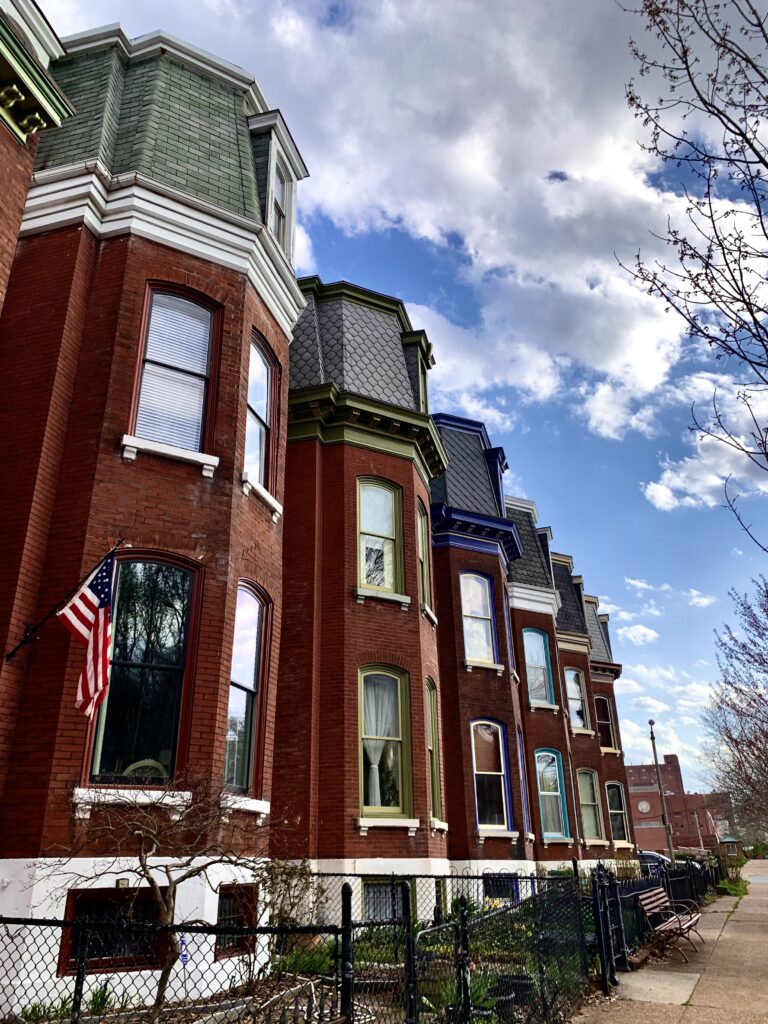
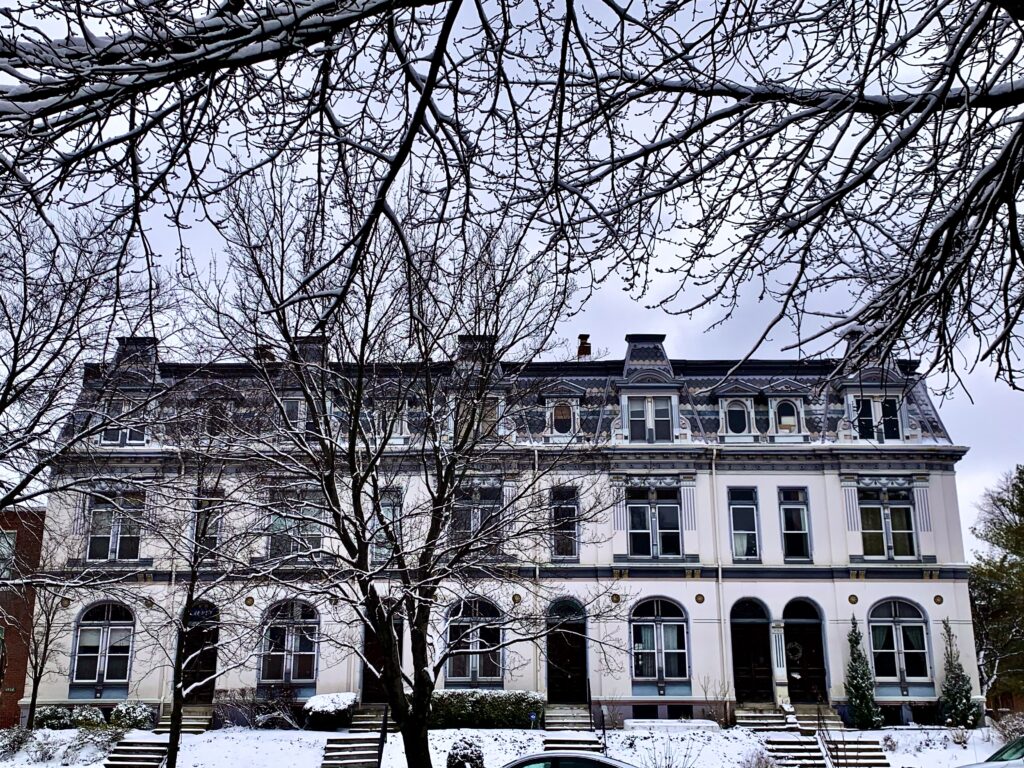

The 1880s also saw a continuation of the Italianate style, but examples from this period had a flat roof instead of the pitched roofs seen in 1860s and 1870s examples of the style. Numerous examples exist in the Fox Park and Compton Heights neighborhoods, with one particularly interesting example along South Compton Avenue that features window bays, and was constructed in 1883. Another example can be found along Russell Boulevard, which was constructed in 1887. Examples can also be found in North St. Louis, including one in Jeff Vanderlou, and a notable example in Old North St. Louis along Wright Street, which was built in 1883 along one of the area’s wedges. By 1890, this style had run a nearly 50 year course, and was eclipsed by other styles.
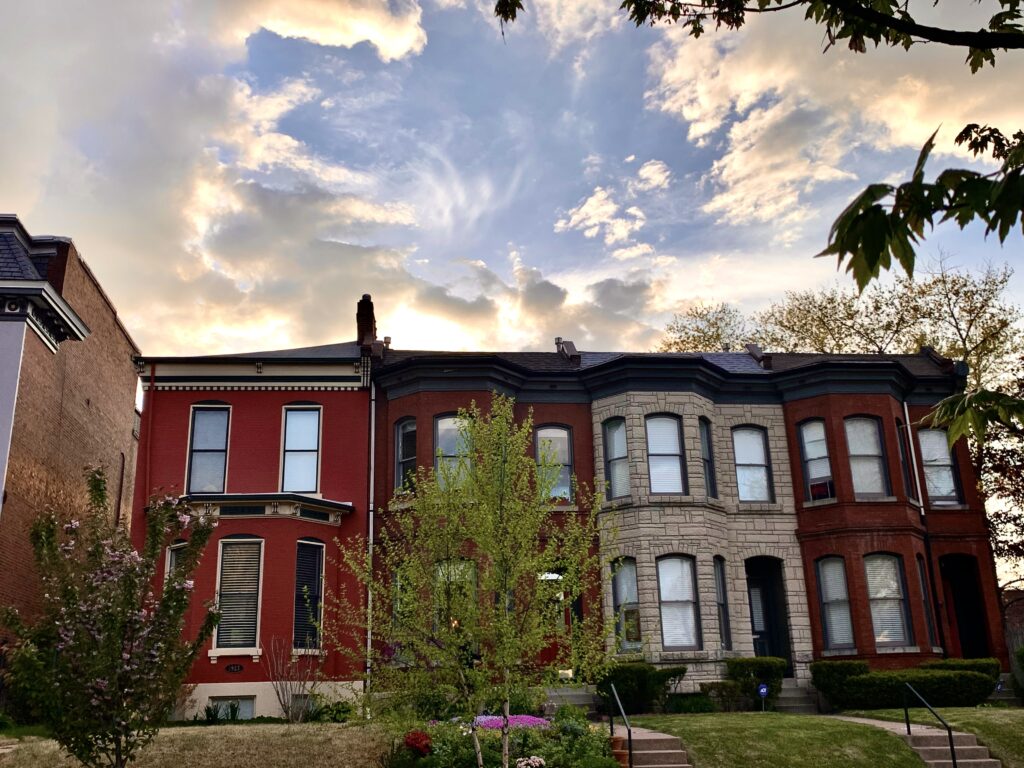

In the late 1880s and early 1890s, newer styles began to replace the Italianate and Second Empire styles that had dominated St. Louis in the post Civil War era. At this point, four family flats had become the most popular form of multi family buildings, but row houses were still being built at this point. On Oregon Ave is a unique example of row houses which were built in 1889, and feature elements from multiple architectural styles. Many examples during the 1890s kept the mansard roof, but incorporated elements from newer styles of architecture, such as the Romanesque Revival style. Some examples, like one row on Laclede Ave in the Central West End, which was built in 1893, were built in the Chateauesque style, while others featured the Romanesque Revival arches, including an example on California Avenue in Benton Park West. Some of these later examples featured elaborate designs, and were made out of yellow brick. One of the finest examples can be found at Nebraska and Accomac Streets. This building, which was built in 1895, features a mansard roof, along with Romanesque Revival influences. Another example is the Gerhart Block, which was built by the Gerhart Realty Company in 1897 at Vandeventer and Laclede Ave. Despite the rise of the four family flat during this time, row houses remained as popular and diverse options for urban housing.

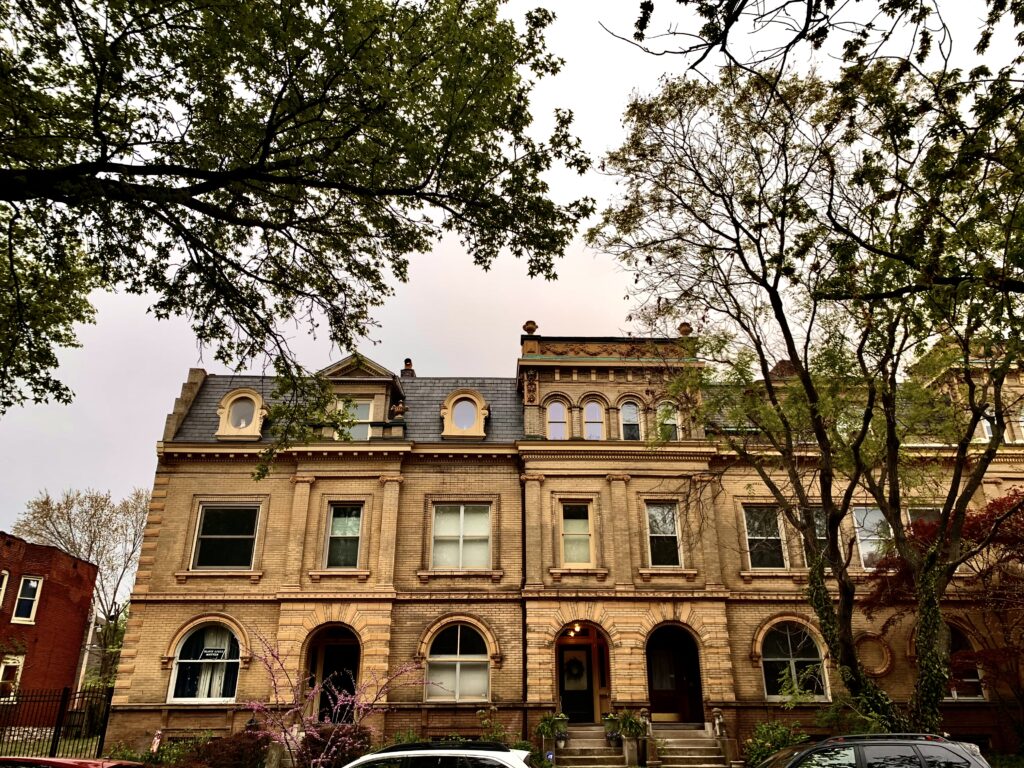
Row houses began to be phased out around the turn of the century, and replaced by apartment buildings. One of the last neighborhoods to see construction of row houses was Forest Park Southeast. In 1894, a row of houses was built on Arco Ave, which featured terra cotta brickwork, a common embellishment seen on late 19th and early 20th century architecture. Forest Park Southeast experienced a major urban expansion during the 1890s and early 1900s, including a number of working class residences. One of the largest row house developments in the city is a 1903 row located on Oakland Ave, which consists of eleven row houses. After the 1904 World’s Fair, row houses had mostly been phased out in St. Louis.

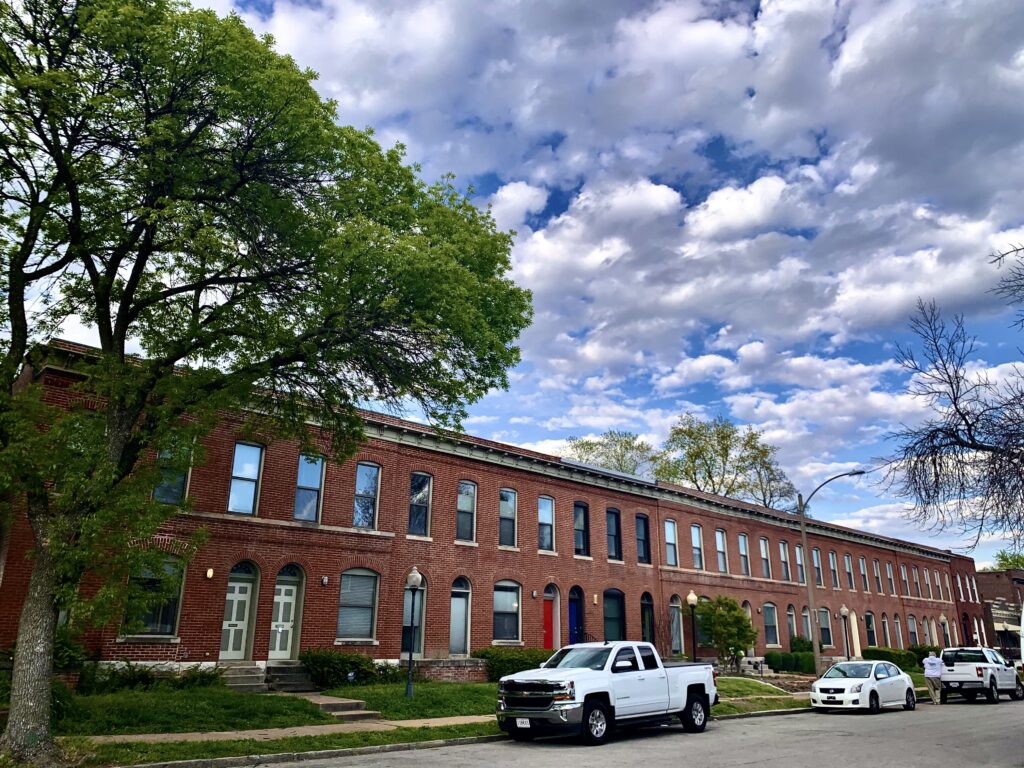
In the mid-20th century, a lot of the city’s row houses were demolished, particularly those in the neighborhoods near downtown. Despite this, many of the city’s 19th century row houses can still be found in multiple neighborhoods in the north and south parts of the city. In some of the historic neighborhoods, such as Soulard, row houses have made a comeback, and are being constructed as infill.
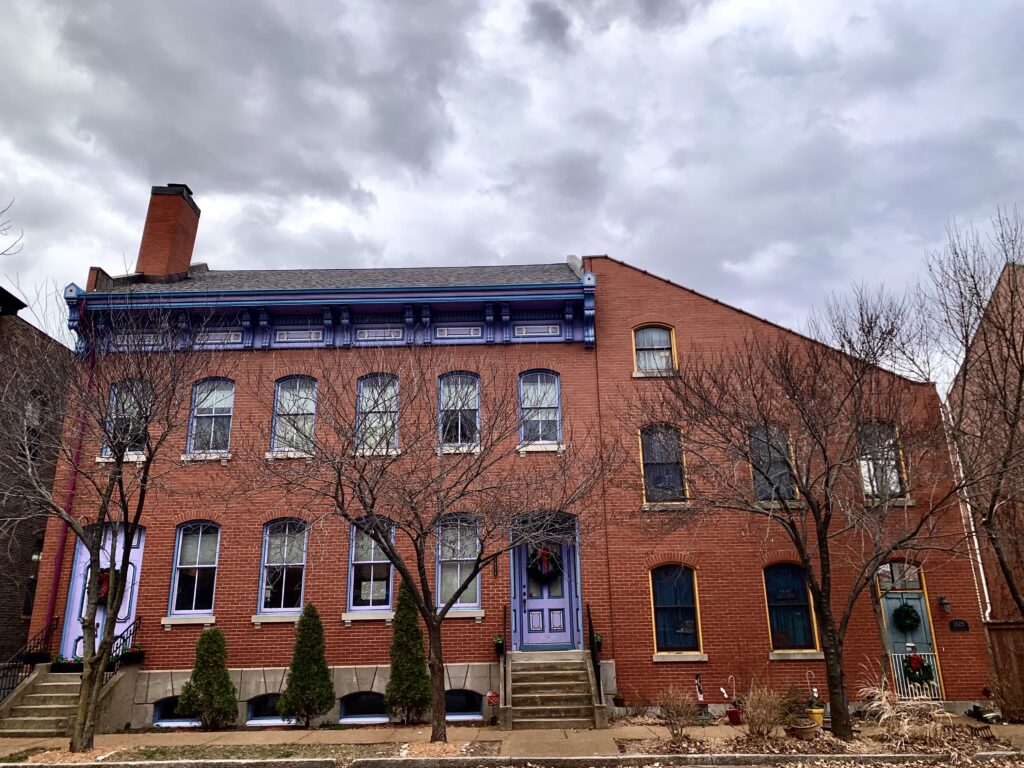
Row houses have historically created much of the city’s population density, and have been a major part of its urban fabric. Hopefully, the future of St. Louis sees the preservation of our row houses and the construction of new row houses in areas that have lost buildings.

